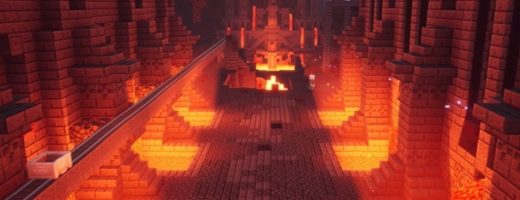Damascus Gear: Operation Osaka Deep Look
Though Operation Osaka shows a bit more polish than the first release, the rehash of the gameplay simply doesn’t blend well with a much more obtuse structure, making for a disappointing overall experience.
Damascus Gear: Operation Tokyo was definitely not a game that was going to take home lots of awards, but it had enough to make its experience of combining the isometric looter gameplay with sci-fi mech-based setting a generally satisfying one. It seems that enough people agreed for Arc System Works and APlus Games to create a sequel, Damascus Gear: Operation Osaka. Though Operation Osaka shows a bit more polish than the first release, the rehash of the gameplay simply doesn’t blend well with a much more obtuse structure, making for a disappointing overall experience.
Operation Osaka is set many years after its predecessor. The threat of the RAGE — rogue AIs that have taken control of armed mechs called GEAR — has been significantly reduced, but still lingers in the background. Players are given a mysterious introduction sequence hinting at bigger things before being thrown into their actual situation. In good news, they have inherited a GEAR, a workshop, and a highly-advanced AI android. The bad side of this is that they have also inherited a rather large debt and have a very short time to pay it back or they will lose everything. Fortunately, the android has come up with a way to repay the debt through undertaking missions and participating in very popular arena battles.
Gameplay is exactly the same as the first game, with players using the GEAR to battle against other mechs. There are two main types of encounters: missions and arena fights. Missions see players going through levels of procedurally-generated corridors and rooms, blasting through other mechs while attempting to complete three randomly-generated tasks. Meanwhile, arena fights see players going one-on-one against another pilot, and are best for a quick injection of cash and to rise up a rather inexplicable ranking system
Controls are fairly basic, with each GEAR having a weapon on each arm and a special back weapon. All of these are activated with a single button press, and may need to recharge before they can be used again. Players can also boost or dodge around the map to avoid attacks, though can’t attack while boosting. It’s a decent and generally enjoyable battle system, but is also unremarkable, with enemies not warranting anything outside of basic reactive and avoidance tactics.
Progression is primarily driven by finding new mech parts — either by purchasing them or collecting them from fallen enemies — though Operation Osaka does add an extra growth option by adding pilot skill points that provide attribute boosts and some passive bonuses. The main problem is this structure quickly becomes boring due to repetition, and the lack of a notable narrative between the start and end completely fails to give players any extra motivation. There’s no real direction for players, and the base game just isn’t strong enough to encourage players to spend time on it for its own merits.
Though decent amounts of money are collectable through missions and individual arena battles, clearing the debt is entirely reliant on being able to win the tournament that takes place on the last day, but the narrative does a poor job directing players towards what they should be doing to achieve that. Unfortunately, the way the game is set up makes it incredibly hard to determine whether the GEAR is at the necessary power level, and it’s quite likely that many players will fail to win the tournament on their first go. It seems like this might be a deliberate act on the part of the developers, as the game curiously doesn’t end at this point; instead the thirty-day cycle begins again but letting players start with the more-powerful GEAR they ended up with. The way the game is balanced, progressing past this point and into the game’s final portions is virtually impossible without a powerful enough GEAR, but the game also fails to provide sufficient motivation to go out and do this or the context of what a powerful enough GEAR actually is.
The one positive in the narrative comes from the AI android, which is just as well as she is the only character that has any meaningful role for the vast majority of the game. Her attempts at finding ways to clear the debt are highly endearing, and her commentary on the state of the world provides some much lacking flavour to the setting. However, even with her the story is bare-bones at best, though there may be some narrative reward is players should manage to clear the debt. Missions attempt to provide some flavour, but it all feels completely superficial, with the player’s action having no relevance or impact on anything up until the very end.
The visuals and audio elements are fine, though quickly become monotonous. The underground facilities that players investigate become very tiresome, and though there is some variation to the enemies, players will be repeating encounters throughout the game. The subtitle implementation is also far from ideal, and can be tough to read against certain backgrounds, such as that of the workshop where an awful lot of what little narrative there is takes place.
Though Damascus Gear: Operation Osaka was never going to be a tour de force, it’s disappointing that the game ends up feeling so vapid. The structure, cycle, and narrative are all less interesting than those of its predecessor, and though Operation Osaka is a bit more polished, the gameplay is almost exactly the same. Some brief enjoyment is there to be had, but it always feels like anything done in the game is simply a bit of time-killing before another one can come along that is more deserving of the attention.
Recommended? No.










Recent Comments